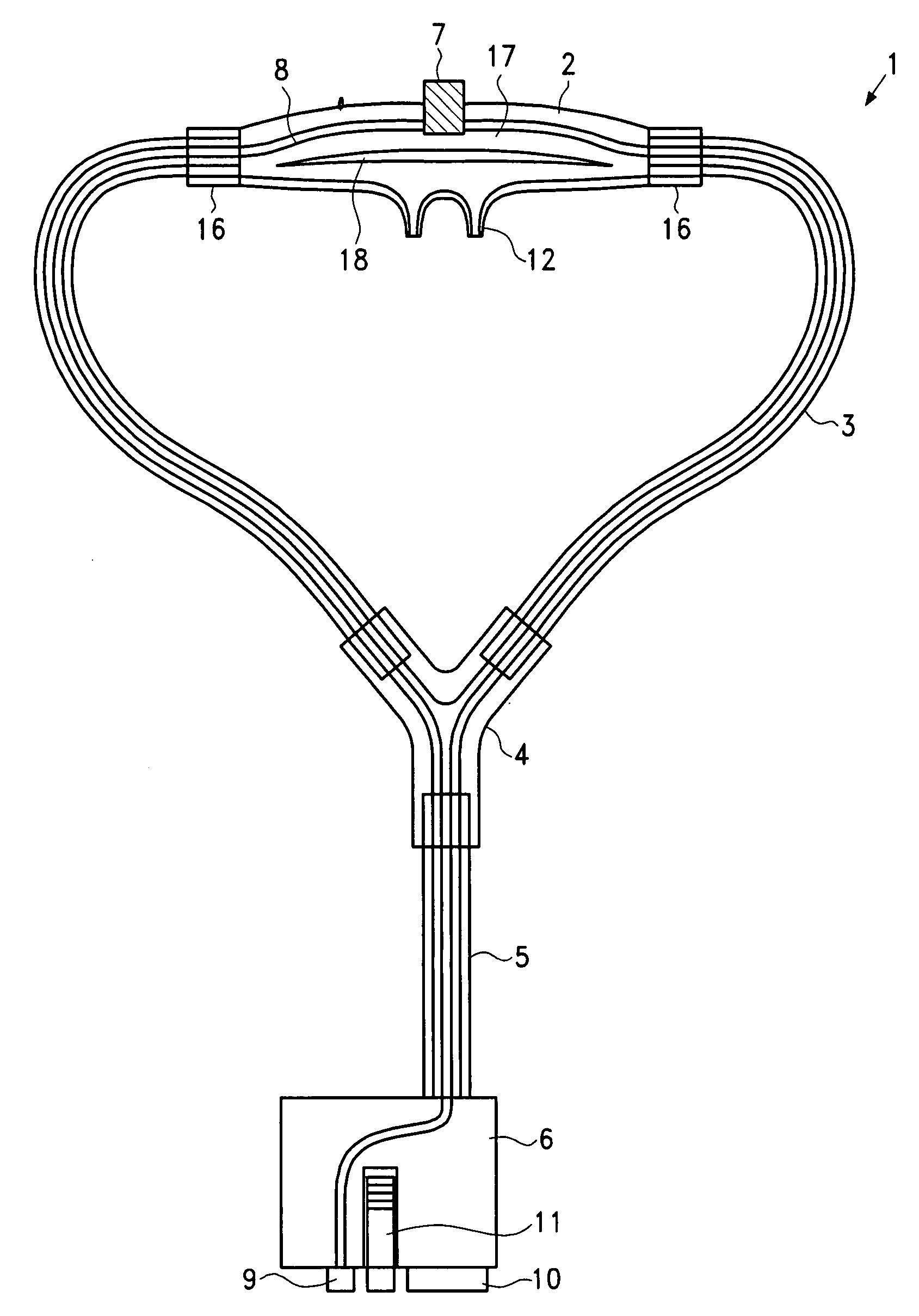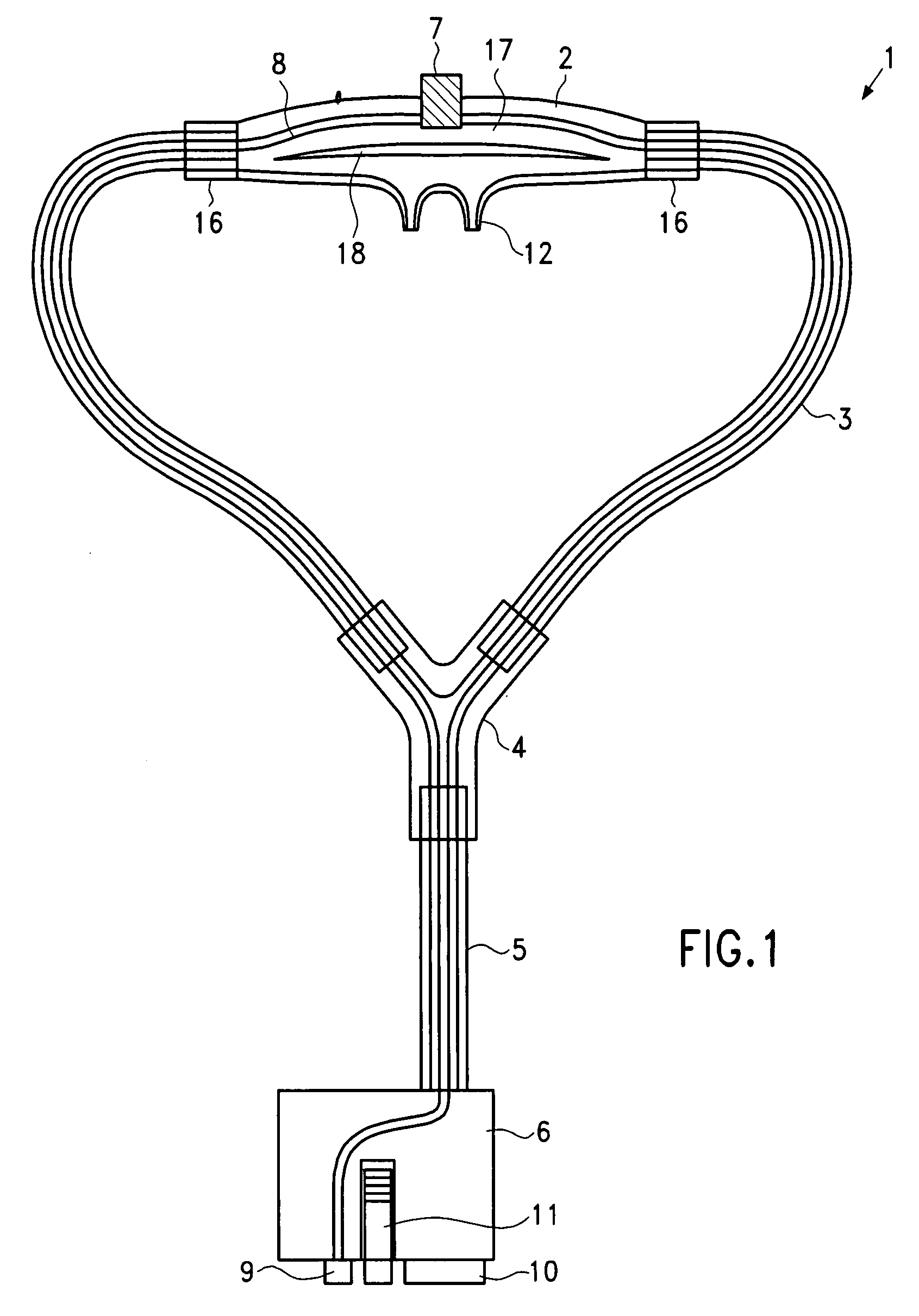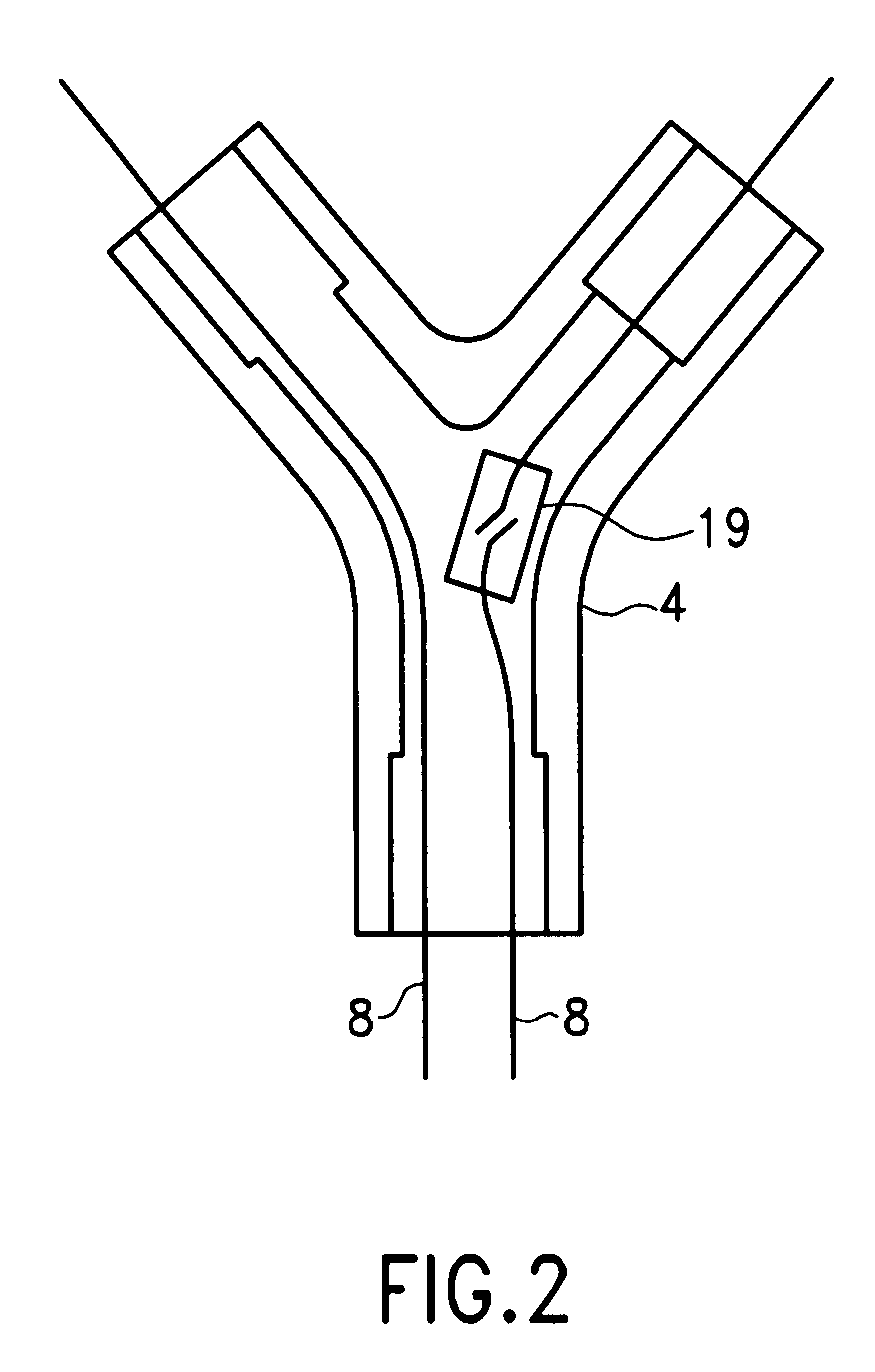Nasal cannula
a nasal cannula and cannula technology, applied in the field of wearable respiration devices, can solve the problems of heating wire overheating at the kink site, melting into the forked tube, and affecting the use of medical engineering products, so as to reduce the longitudinal expansion of the tube, reduce the sound emission, and reduce the sound
- Summary
- Abstract
- Description
- Claims
- Application Information
AI Technical Summary
Benefits of technology
Problems solved by technology
Method used
Image
Examples
first embodiment
[0035]FIG. 1 shows a nasal cannula 1 according to the invention, comprising a nosepiece 2. The nose piece 2 is supplied with compressed air via a forked tube 3, a Y-shaped element 4, a supply tube 5 and a connector 6. The nosepiece 2 includes two prongs 12 for administrating air into both nostrils of a user. Internal radius steps 16 compensate the difference between the internal and external radius of the forked tubes, thereby preventing abrupt changes to the cross-section of the airways.
[0036] The connector 6 comprises a pneumatic connector part 10, an electrical connector part 9 as well as a clamp 11. From the electrical connector part 9 a heating wire 8 is passed through the supply tube 5, the Y-shaped element 4, the right element of the forked tube 3, the right part of the nosepiece 2 to a temperature sensor 7, and from there through the left part of the nosepiece 2, the left element of the forked tube 3, the Y-shaped element 4 and the supply tube 5 back to the electrical connec...
second embodiment
[0044]FIG. 3 shows a nasal cannula, in which the supply tube 5 and the Y-shaped element 4 have been replaced by a double-lumen tube 13. The double-lumen tube consists of two forked tube elements which are mechanically connected to each other. In this embodiment, the Y-shaped element 4 is not applicable or is integrated in the connector 6 according to another perspective. At the point where the two forked tube elements diverge, no sharp edges are provided, but only wide radii. At this point a clip 14 may be provided, which prevents the double-lumen tube from further splicing apart. The division of an airflow to two forked tube elements may be realized in the connector 6 and is, thus, farther away from the prongs 12 so that the noise emission is lower.
[0045]FIG. 4 shows a possibility to read out a temperature sensor via two heating wires only. In the equivalent circuit diagram shown in FIG. 4, the two heating wires 8 are represented by the two resistors RH. RT represents a two-termina...
PUM
 Login to View More
Login to View More Abstract
Description
Claims
Application Information
 Login to View More
Login to View More - R&D
- Intellectual Property
- Life Sciences
- Materials
- Tech Scout
- Unparalleled Data Quality
- Higher Quality Content
- 60% Fewer Hallucinations
Browse by: Latest US Patents, China's latest patents, Technical Efficacy Thesaurus, Application Domain, Technology Topic, Popular Technical Reports.
© 2025 PatSnap. All rights reserved.Legal|Privacy policy|Modern Slavery Act Transparency Statement|Sitemap|About US| Contact US: help@patsnap.com



